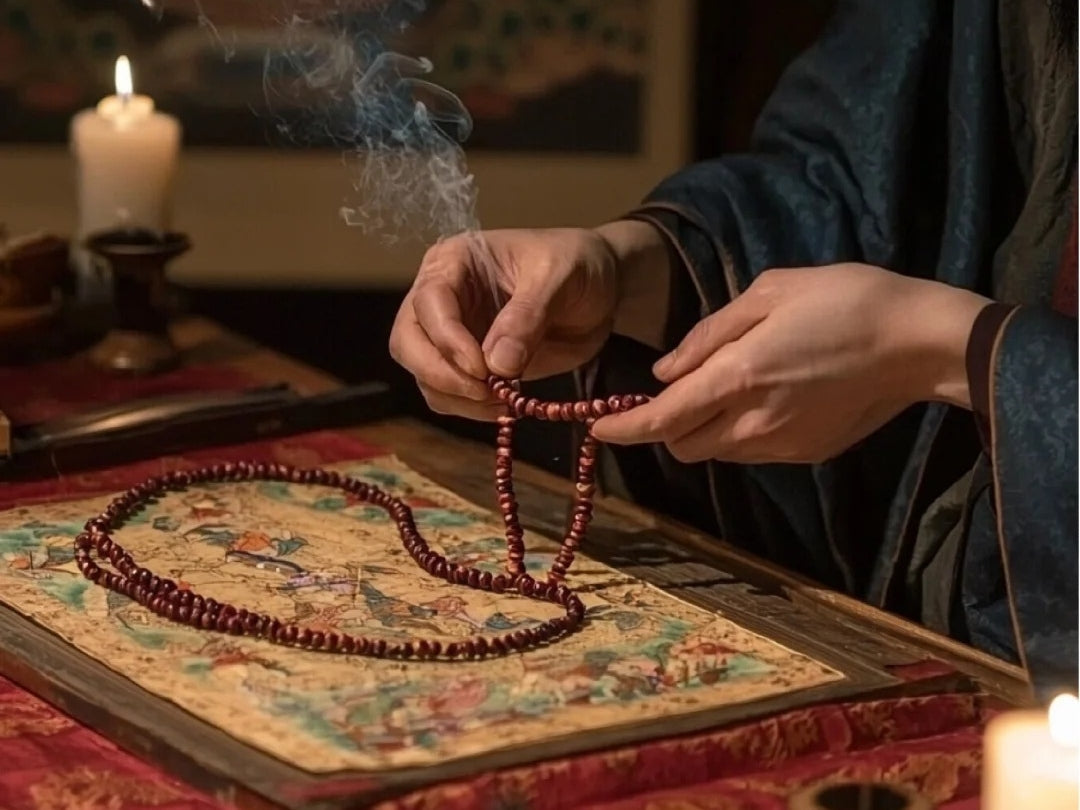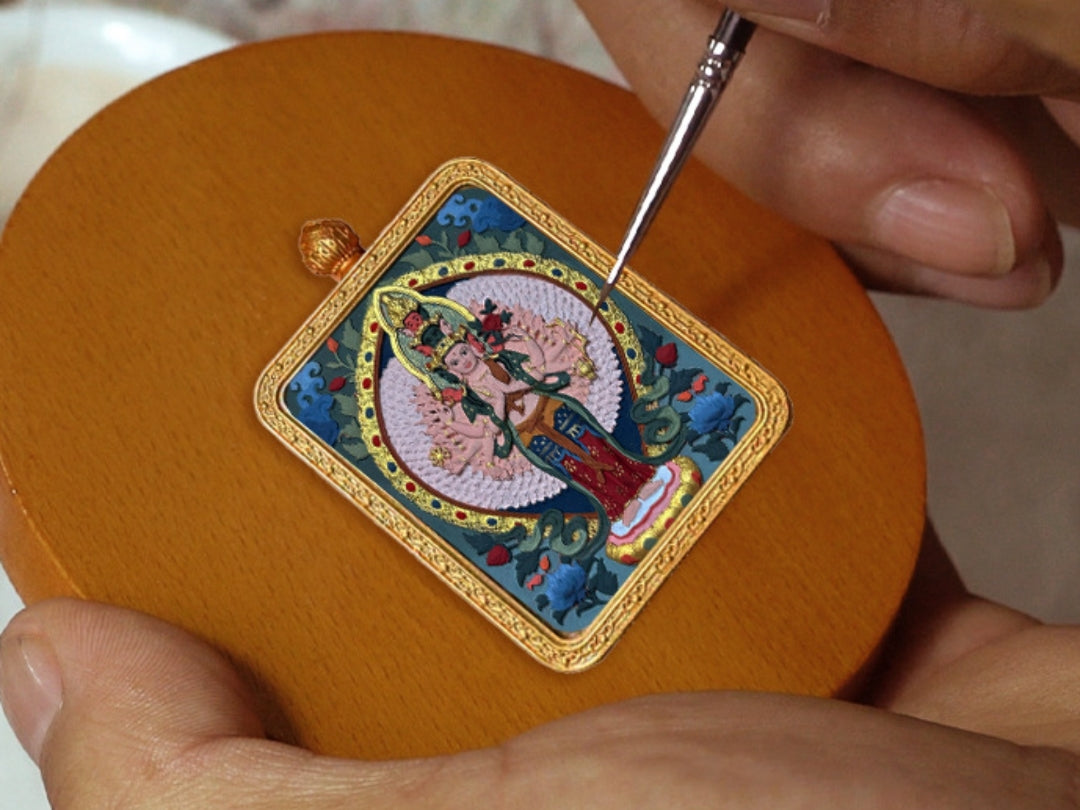Thangka painting, originating between the 7th and 12th centuries in Nepal and Tibet, has long served as a teaching tool and meditation aid within Tibetan Buddhism. Over time, this sacred art spread across the Himalayas, influencing Bhutanese, Chinese, and Nepalese traditions, all while maintaining its core iconography and techniques. Today, artisans at QiLing Aura carry forward this legacy by creating Thangka Pendants that encapsulate the meticulous processes of traditional Thangka painting—preparing a gesso-coated canvas, applying natural mineral pigments such as malachite and cinnabar, and layering delicate gold leaf—into miniature masterpieces you can wear.
The Origins of Thangka Painting
Thangka art began as large-scale religious scrolls used to illustrate Buddhist teachings and serve as focal points for meditation. Monks and lay artists would stretch cotton or silk onto wooden dowels, then apply a mixture of chalk and animal glue (gesso) to create a smooth surface.
Key Characteristics
-
Materials: Cotton or silk base prepared with gesso.
-
Pigments: Mineral-based colors—green from malachite, red from cinnabar, plus lapis lazuli, orpiment, and more.
-
Gold Leaf: Finely hammered 24k gold applied to halos, borders, and deity ornaments.

Miniaturization: From Scroll to Pendant
Adapting these techniques for jewelry demands extraordinary precision. In QiLing Aura’s studio:
-
Micro-Canvas Preparation: Tiny brass or silver discs are coated with a gesso-like primer to mimic the traditional canvas texture.
-
Fine Brushwork: Using ultra-fine sable brushes, artists hand-paint deities and mandalas at dimensions often under 2 cm across.
-
Pigment Application: Natural mineral pigments are suspended in animal glue, then layered in translucent washes to achieve depth.
-
Gold Detailing: Real gold leaf or powder is applied with a steady hand, accentuating sacred symbols and borders.
This careful adaptation ensures that each Thangka Pendant retains the spiritual potency and visual richness of its larger counterparts.
Wearing a Piece of Tibetan Heritage
By carrying a miniature Thangka close to the heart, wearers maintain a tangible connection to Tibetan Buddhist practice:
-
Mindful Reminders: Every glance at the pendant can serve as an invitation to pause and reflect.
-
Spiritual Protection: Gold accents and sacred imagery are traditionally believed to offer blessings and ward off negative energies.
-
Artisan Legacy: Each pendant represents generations of Tibetan artisans, sustaining an intangible cultural heritage.
Conclusion
The evolution of Thangka art into wearable pendants symbolizes the enduring value of Tibetan traditions. QiLing Aura’s Thangka Pendants allow modern practitioners and art lovers alike to carry forward a millennia-old heritage, blending time-honored techniques with contemporary design for mindful adornment.





